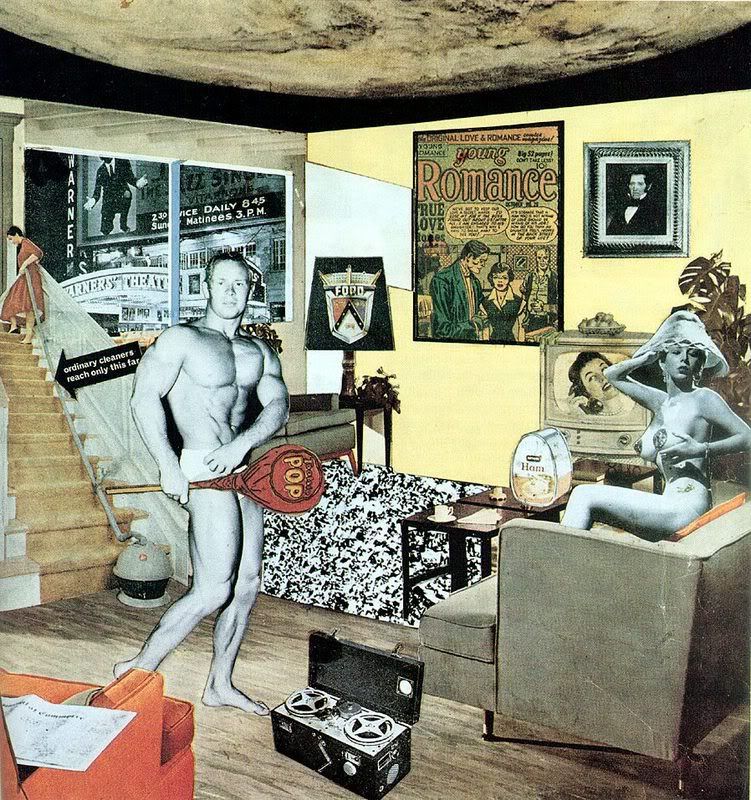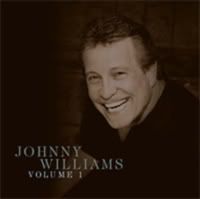
It’s been a whole year since I began this blog, and I only realised this morning! I got a little writer’s block coming up with some more historical posts about soul in Britain, when I thought, why don’t I write about
Chuck Berry's Brown Eyed Handsome Man?

After deciding to make a blog while not really knowing what it entailed, and discovering that every variation of ‘sweet soul music’ had been taken already, I stayed up all night watching
The Buddy Holly Story on TV, where they play Buddy’s cover of this song, and in the morning the title still appealed to me. Thinking about the song and its lyrics, it seemed to evoke a lot of things about the significance of black musical forms in America. While being a ‘rock and roll’ song meant it would highlight a broader definition of rhythm and blues, that make more sense outside of the narrow genres in the racks of your local music store.
Coded language and social commentary have a long history in music, from the rhythmic patterns and drumbeats of slave songs, through the exodus and salvation imagery of revival songs and spirituals and into gospel music. In the blues, the telling of someone’s troubles in song has revealed something of the conditions of the world around them. Characters like Stag-O-Lee have lived through many decades, informing us through their fictional exploits of the desperate side of life, much in the same way as today’s hip-hop artists continue to do. Jazz followed all of these trends also, using music itself to express it.

The emergence of rockabilly and rock and roll highlighted a changing society in which the old divisions and the certainties of the folkways of segregation in America were being challenged and bypassed. In the first of the tracks featured today, you can hear four individuals challenging those changes as they struggle to get to grips with playing Brown Eyed Handsome Man at
Sun Studios in Memphis in December 4th 1956.
Carl Perkins,
Elvis Presley,
Johnny Cash and
Jerry Lee Lewis. Four white boys who’d, between them, spent their youths listening to gospel in black churches, learning to play blues guitar from black musicians, grown up picking cotton on mixed farming communes thanks to the New Deal, amongst other influences.
Carl Perkins, always shy and thoughtful, and a little unsure of his true talent, is clearly awestruck, as they all are, as they ponder the complexity and the wit of the lyrics, and while Elvis struggles to keep the words in rhythm. Finally, he confides earnestly to the others:
“You oughta hear some of this stuff sitting around, boy”, says Carl Perkins.
“I’ve just come offa a tour with this guy, Chuck Berry. Man, he sat down behind the stage and just … man, I ain’t no good!”
Chuck Berry creates a series of entertaining, racy tale of the allure of brown-eyed handsome men and their exploits, and puts his penchant for suggestiveness to good use by this time exhorting the women to seek them out, while he of course plays the role. The race of the character is never made explicit, but is inferred by the distinctive choice of brown eyes, as opposed to the very popular ‘blue eyes’ of dozens of popular crooners’ tunes. There lies the element of social danger that was implicit in all rock and roll performed by black artists, sexual desire between races.
Little Richard for example was overt about courting publicly women of all races. Chuck is going further than this, however, in his lyrics. He subverts the dominant assumptions of the era that white women were chaste, unwilling victims of ‘miscegenation’ by threading the song with the line,
“Her mother told her daughter go out and find yourself …” The suggestion is that the sexual colour line was never as rigid as society’s elders wanted it to appear. Chuck tells us
“Way back in history three thousand years, Back ever since the world began.” In the realm of individual relations, the reality defied the constructs of social stricture.
Roy Kasten, writing last year at the
Living In Stereo blog, made a detailed appreciation of the lyrical talent of Chuck Berry, and said:
“Berry turned the sound of a sub-culture into a universal lingo and made three minute dance numbers into comprehensive portraits of life.”How did the song story originate? According to some sources, the first verse was inspired by Berry observing a West Coast policeman trying to arrest a Hispanic man for loitering until a girl talked him out of the arrest. The second verse is alleged to be inspired by images in the sadomasochistic novel Venus In Furs. Meanwhile, in the final verse, Chuck Berry is said to celebrate the baseball player
Jackie Robinson, though again, some claim that he is talking about
Larry Doby, first African-American player in the American League. It is the one verse where a brown eyed handsome man is shown beyond the arena of sexuality, beating the odds and winning the game, and is an image of power.

It’s a brilliantly written tale, and elements of its lyrical techniques have influenced others such as Van Morrison with his Brown Eyed Girl. Meanwhile, in the hands of other singers, such as
Nina Simone and
Fontella Bass, the song gets a different treatment, as when sung from a black female perspective in the black power era, it took on connotations of a call to support black men. While this was never the original intention of the song, it certainly adds something interesting, especially since the underlying causes of alienation of black men in American society have not been addressed and have merely become worse over the decades.
Eventually, I imagine, Elvis got the hang of the lyrics.
Arrested on charges of unemployment,
he was sitting in the witness stand
The judge's wife called up the district attorney
Said you free that brown eyed man
You want your job you better free that brown eyed man
Flying across the desert in a TWA,
I saw a woman walking across the sand
She been a-walkin' thirty miles en route to Bombay.
To get a brown eyed handsome man
Her destination was a brown eyed handsome man
Way back in history three thousand years
Back every since the world began
There's been a whole lot of good women shed a tear
For a brown eyed handsome man
That's what the trouble was brown eyed handsome man
Beautiful daughter couldn't make up her mind
Between a doctor and a lawyer man
Her mother told her daughter go out and find yourself
A brown eyed handsome man
That's what your daddy is a brown eyed handsome man
Milo Venus was a beautiful lass
She had the world in the palm of her hand
But she lost both her arms in a wrestling match
To get brown eyed handsome man
She fought and won herself a brown eyed handsome man
Two, three count with nobody on
He hit a high fly into the stand
Rounding third he was headed for home
It was a brown eyed handsome man
That won the game; it was a brown eyed handsome manThe Million Dollar Quartet – Brown Eyed Handsome Man (Rehearsal Outtake) (Sun Records) Dec 4th 1956
Chuck Berry – Brown Eyed Handsome Man (1956)
Buddy Holly – Brown Eyed Handsome Man (released 1963)
Nina Simone – Brown Eyed Handsome Man (High Priestess of Soul LP, New York 1966)
Thanks To Living In Stereo blog for giving me some inspiration for this post, and they are always worth a read for descriptive and thoughtful appreciations of music. Read their Chuck Berry posts starting here. Also interesting is this account by Dave Marsh of the story of Johnny B Goode and the way society affected its lyrics: http://www.lexjansen.com/cgi-bin/marsh_xml.php?fn=2
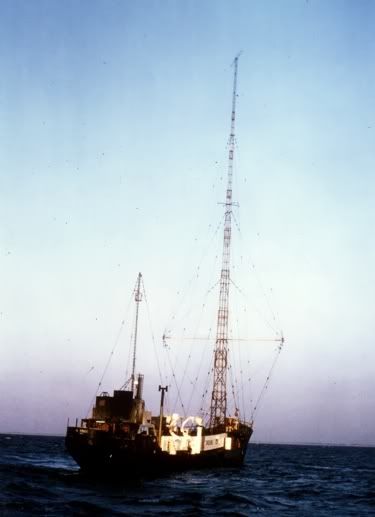 Radio Caroline and the other pirate radio stations of the 1960s freed up the airwaves of a Britain sorely underserved by the offical channels of the British Broadcasting Company. First broadcasting from the MV Frederica off the coast of Essex in April 1964, outside of British territorial waters, it soon merged with Radio Atlanta, whose boat, the Mi Amigo, became Radio Caroline South, while the Frederica sailed to the Isle of Man to become Radio Caroline North, where its broadcasts were even more heavily influenced by jazz and rare blues and soul. They continued to broadcast until 1967, when offshore radio was outlawed. During that time, they transformed the musical tastes of Britain in the 1960s. Although their influence was equally as powerful for British beat and rock, they had a major influence in promoting soul music during the years 1964 and 1965.
Radio Caroline and the other pirate radio stations of the 1960s freed up the airwaves of a Britain sorely underserved by the offical channels of the British Broadcasting Company. First broadcasting from the MV Frederica off the coast of Essex in April 1964, outside of British territorial waters, it soon merged with Radio Atlanta, whose boat, the Mi Amigo, became Radio Caroline South, while the Frederica sailed to the Isle of Man to become Radio Caroline North, where its broadcasts were even more heavily influenced by jazz and rare blues and soul. They continued to broadcast until 1967, when offshore radio was outlawed. During that time, they transformed the musical tastes of Britain in the 1960s. Although their influence was equally as powerful for British beat and rock, they had a major influence in promoting soul music during the years 1964 and 1965.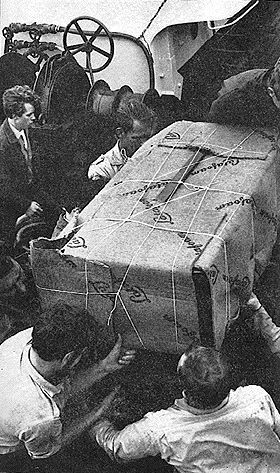 This post recounts an unusual event from May 5th 1965 at Radio Caroline. Keen to do things differently from the BBC, the decision was made to invite renowned jazz musician Jimmy Smith aboard, who was in London to record a soundtrack for the film Where The Spies Are and to perform at the Royal Festival Hall. Jimmy brought a precious Hammond B3 organ with him, and his band, for an on-air performance live from the deck of the Mi Amigo. Simon Dee introduced them, and then Jimmy and drummer Tony Crombie, and guitarist Tony Thorne performed two tunes titled Hip Ship Blues and Satin Doll. Despite the experience of freezing on the windswept deck, Jimmy Smith also recorded several jingles that were played on Radio Caroline North.
This post recounts an unusual event from May 5th 1965 at Radio Caroline. Keen to do things differently from the BBC, the decision was made to invite renowned jazz musician Jimmy Smith aboard, who was in London to record a soundtrack for the film Where The Spies Are and to perform at the Royal Festival Hall. Jimmy brought a precious Hammond B3 organ with him, and his band, for an on-air performance live from the deck of the Mi Amigo. Simon Dee introduced them, and then Jimmy and drummer Tony Crombie, and guitarist Tony Thorne performed two tunes titled Hip Ship Blues and Satin Doll. Despite the experience of freezing on the windswept deck, Jimmy Smith also recorded several jingles that were played on Radio Caroline North. 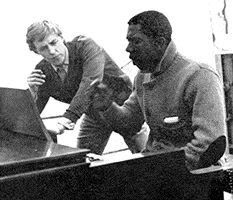
 Born in Norristown, Pennsylvania, on Dec. 8, 1925, Jimmy Smith initially learned piano at home from his father and mother, he was a prodigy and was renowned for his endless ability to improvise without repetition. After service in the war, he went on to study bass and piano at music schools in Philadelphia, despite being unable to read music - a fact his teachers never discovered! He experimented with the Hammond organ starting in 1951, but it took him until 1955 before he had finally found a sound that was distinctivey his own. He got work playing in some of New York's most famous clubs, including Cafe Bohemia and Birdland. Offered a contract with Blue Note soon after, his 1956 album New Sounds On The Organ pushed the organ as a jazz instrument. In particular, since he was not always accompanied by a bass player in his trio, Jimmy would use his knowledge of bass to play those lines himself, giving more depth to his sound, while mimicing horn players on the other hand to give it a punchy sound. The gospel tinged, bluesy style of 'soul jazz' Jimmy Smith developed was an influence on every other organist, including r&b artist Ray Charles.
Born in Norristown, Pennsylvania, on Dec. 8, 1925, Jimmy Smith initially learned piano at home from his father and mother, he was a prodigy and was renowned for his endless ability to improvise without repetition. After service in the war, he went on to study bass and piano at music schools in Philadelphia, despite being unable to read music - a fact his teachers never discovered! He experimented with the Hammond organ starting in 1951, but it took him until 1955 before he had finally found a sound that was distinctivey his own. He got work playing in some of New York's most famous clubs, including Cafe Bohemia and Birdland. Offered a contract with Blue Note soon after, his 1956 album New Sounds On The Organ pushed the organ as a jazz instrument. In particular, since he was not always accompanied by a bass player in his trio, Jimmy would use his knowledge of bass to play those lines himself, giving more depth to his sound, while mimicing horn players on the other hand to give it a punchy sound. The gospel tinged, bluesy style of 'soul jazz' Jimmy Smith developed was an influence on every other organist, including r&b artist Ray Charles.
